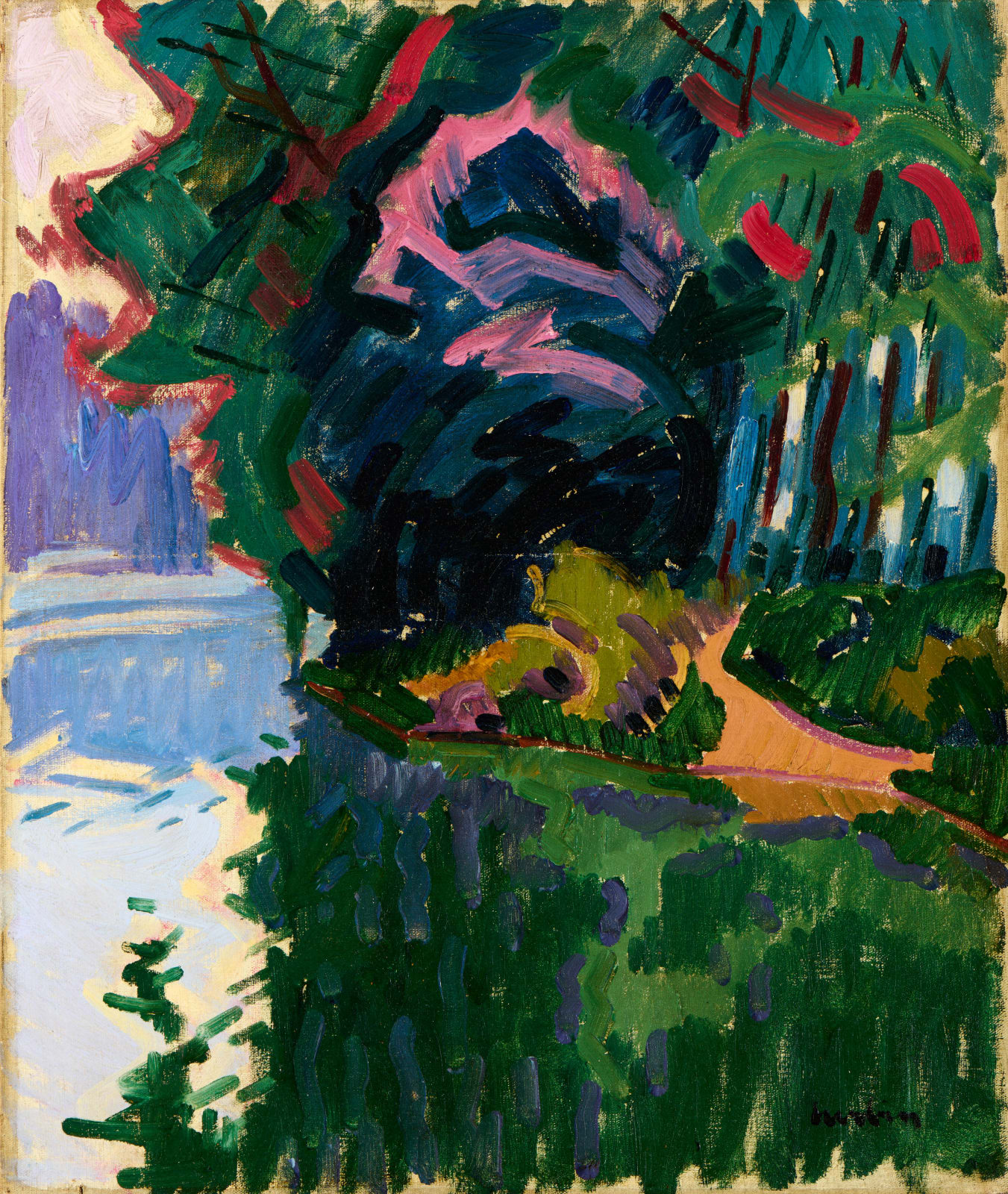Auguste Herbin
Bord de rivière, 1906
Oil on canvas
21 5/8 x 18 1/8 in, 55 x 46 cm
Signed 'Herbin' lower right
The first decade of the 20th century was a defining period for Auguste Herbin. Herbin first worked in the Impressionist style while studying at Ecole des Beaux-Arts in Lille, before...
The first decade of the 20th century was a defining period for Auguste Herbin. Herbin first worked in the Impressionist style while studying at Ecole des Beaux-Arts in Lille, before moving to Paris in 1903. It was in the French capital that he joined the circles of the avant-garde artists Picasso, Gris and Metzinger.
Following the infamous Fauve display at the Salon d’Automne in 1905, Herbin was amongst a group of young artists eager to adopt the saturated colours and rigorous brushstroke of the ‘wild beasts’ Matisse, Derain and Vlaminck. He exhibited alongside the group at the Salon des Indépendants in 1906, the same year he created ‘Bord de rivière’. The exuberant palette and vibrant brushstrokes of this work display Herbin’s full immersion in Fauvism. Herbin’s application of colour also crucially foreshadows his mature abstract style and interest in the symbolic and allegorical power of tones.
‘Bord de rivière’ is a defining example from this brief, but vital, period in Herbin’s early oeuvre. The artist’s fauvist paintings are highly prized with a self-portrait from the same year now in the collection of the Kröller Müller Museum.
Following the infamous Fauve display at the Salon d’Automne in 1905, Herbin was amongst a group of young artists eager to adopt the saturated colours and rigorous brushstroke of the ‘wild beasts’ Matisse, Derain and Vlaminck. He exhibited alongside the group at the Salon des Indépendants in 1906, the same year he created ‘Bord de rivière’. The exuberant palette and vibrant brushstrokes of this work display Herbin’s full immersion in Fauvism. Herbin’s application of colour also crucially foreshadows his mature abstract style and interest in the symbolic and allegorical power of tones.
‘Bord de rivière’ is a defining example from this brief, but vital, period in Herbin’s early oeuvre. The artist’s fauvist paintings are highly prized with a self-portrait from the same year now in the collection of the Kröller Müller Museum.
Provenance
Bellier et Schoeller, 1949Private Collection, Paris
